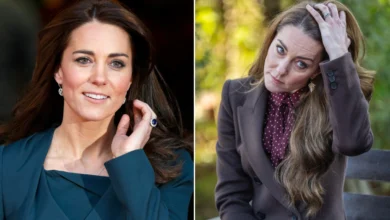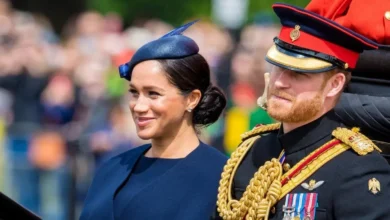Mystery complicated behind Kate Middleton’s illness that shift dynamics between…

When Catherine, Princess of Wales, smiled to crowds outside Sandringham on Christmas Day, no-one expected it would be her last public appearance for months.
On December 25, the star royal was photographed corralling her young children on the grounds of the Windsor family’s country estate in Norfolk after attending a Christmas service.
The publicity generated from this yearly event was a rather typical day for a senior member of the House of Windsor.
But what made the spectacle extraordinary was what happened next: Britain’s future queen disappeared from public view.
In late January, the palace confirmed Kate was undergoing planned abdominal surgery and would spend two weeks in hospital before returning home to convalesce.
It announced she would temporarily withdraw from public duties until after Easter, which falls on March 31 this year.
No further detail about her condition was given, though the palace acknowledged, “the Princess of Wales appreciates the interest this statement will generate”.
“She hopes that the public will understand her desire to maintain as much normality for her children as possible; and her wish that her personal medical information remains private,” an announcement released in January read.
Members of the royal family have long argued they have a right to expect some measure of privacy, and have previously gone to great lengths to hide signs of ill health.
Indeed for centuries, the British monarchy has shrouded itself in mystery while allowing the occasional glimpse over palace walls.
But when Kensington Palace announced the princess wanted to recuperate in private, some of her future subjects revolted.
The royal’s mystery illness and disappearance from public view has fuelled speculation about her condition, whipping tabloids into a frenzy and triggering #WhereisKate to trend on Twitter.
The rumours have been bubbling online for weeks, hitting boiling point when Prince William pulled out of a planned public appearance on February 27, citing a “personal matter”.
Days later, a long-lens paparazzi shot of a woman resembling Kate, wearing large sunglasses and being driven in a car by her mother, sent the online rumour mill into overdrive.
UK media outlets refused to publish the photos, while online users offered up hysterical theories about whether this was really Kate or a body double.
The furore continued when the British Army announced she would attend a military ceremony in June, only for a palace official to declare it hadn’t been set in stone.
Intense interest and conspiracies about the royal family are nothing new.
But what makes the rumours surrounding the Princess of Wales’ recent surgery unique, is how it highlights the increasingly blurred lines between the royals’ private and public selves.
The Windsors as a soap opera
While gossiping about royals is as old as the British monarchy itself, the relationship between the monarch and their subjects shifted dramatically in the last century.
By the 60s, Queen Elizabeth II knew things needed to change.
The secrecy enjoyed by her predecessors was gone, the monarch’s political powers were heavily curtailed, and social attitudes to traditional institutions were starting to change.
Palace aides, as well as the Queen’s husband, Prince Philip, decided to allow a BBC crew to film a fly-on-the-wall style documentary to give the British people a glimpse over palace walls.
The program, titled Royal Family, showed the Queen eating meals with her family, attending functions, and rummaging around in her famous purse for coins so six-year-old Prince Edward could buy ice cream.
David Attenborough, who was then a controller at BBC 2, told the director his film was “killing the monarchy”.
“The whole institution depends on mystique and the tribal chief in his hut,” he wrote in a letter to Richard Crawston.
“If any member of the tribe ever sees inside the hut, then the whole system of the tribal chiefdom is damaged and the tribe eventually disintegrates”.
It aired just once in June 1969, before it was reportedly locked away by Buckingham Palace in the royal archives.
But while the royal family tried to limit the public to one peek behind the curtain, the airing of the documentary was a transformational moment.
Since then, the proliferation of tabloid newspapers, gossip magazines and online blogs has only pushed further and further into the private lives of the royal family.
Sometimes that information is gathered illegally through intercepted conversations and phone hacking, such as the tapped call between Camilla and Charles that revealed their affair in 1993.
But sometimes the Windsors have tried to harness this intense interest in their lives, allowing their weddings to be televised and posing for pictures with new babies.
And last year, Prince Harry accused members of his family of going a step further, claiming they had crawled “into bed with the devil” to gain favourable media coverage.
He claimed his stepmother Queen Camilla leaked information to the tabloids to rehabilitate her image with the British people after her affair with King Charles.



